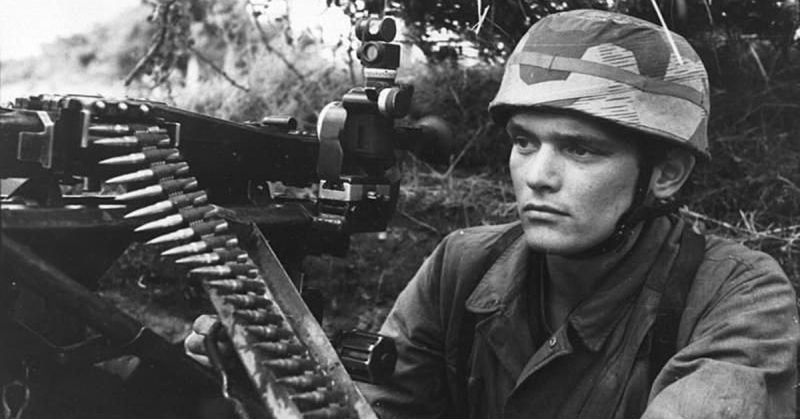On the 6th of June 1944, the Allies invaded Normandy. For the German troops defending this region of occupied France, it was the beginning of a desperate fight as they tried to halt the Allied invasion of Western Europe.
The Men in the Line
The quality of the German troops varied but was generally quite high. Some were SS men, highly politicized troops dedicated to the Nazi cause, brash and confident in the certainty of victory. Some were seasoned veterans who had fought across Europe, including the bitter fighting on the Eastern Front. Some were new soldiers or came from units that had seen little battlefield action.
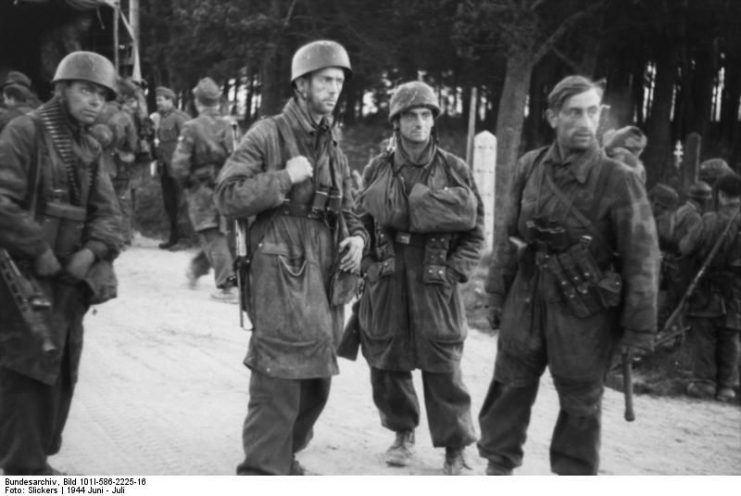
To many, it must have been clear that this was the last chance for victory. If they could not stop the Allies while they were contained in this small area, then they would never stop them at all.
Germany’s proud military tradition and its successes early in the war had left many soldiers dismissive of the quality of their opponents. They were about to see how wrong their assessment had been.
Chaos and Confusion
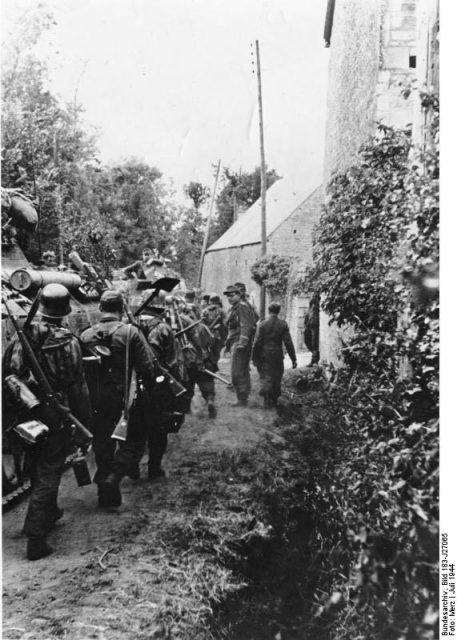
The first days of fighting took place amid chaos and confusion. Though an invasion was expected, Allied counter-intelligence work had left the Germans expecting it further east, around Calais. Even as the enemy hit the beaches, there was confusion about where attacks were coming and what would follow.
The chaos was made worse by the damage done to communication lines. Resistance operatives and Allied bombers had destroyed roads, railways, bridges, and phone lines. It was hard to get messages through and harder still to get troops to where they needed to be.
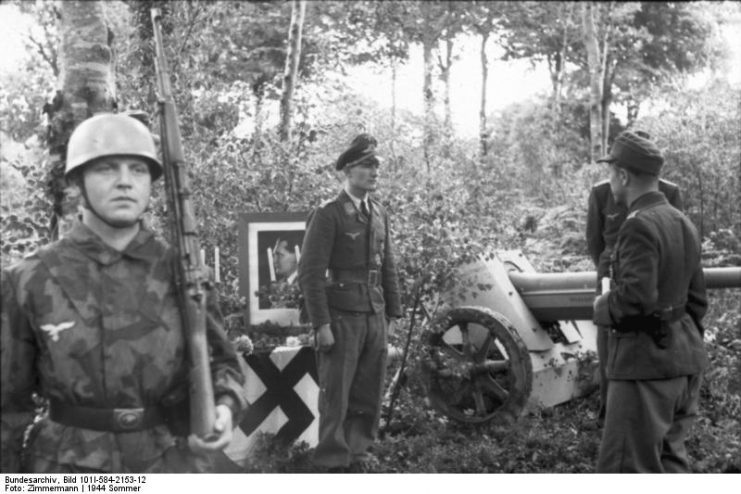
The Defensive Advantage
The Germans had the advantage of fighting on the defensive. This was a particularly powerful advantage in Normandy because of the terrain.
Much of Normandy was filled with bocage, a landscape of winding roads between high hedgerows and hills. It provided countless places of concealment. From these, the Germans launched ambushes against the Allied troops as they advance.
Having to advance meant having to take risks, and the Germans made the most of that. They waited for the Allies to come to them, staying in cover for as long as possible, firing at exposed enemies from covered positions.
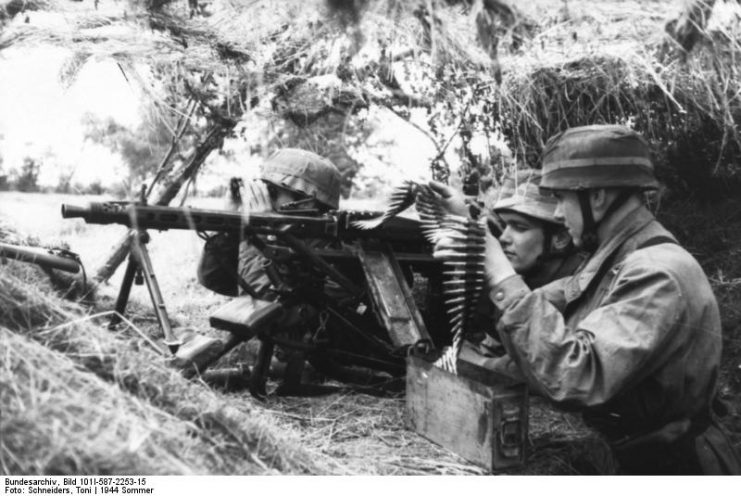
The Germans had occupied this territory for four years and during the final year they had been making concerted preparations for its defense. They might struggle to move troops up, but they could use the bunkers, pillboxes, and trenches already in place. Whether it was fighting for the beaches on the first day or defending key positions like the city of Caen, they were ready to stand firm.
Countering Advances
This doesn’t mean that the Germans sat still. They often rushed troops to counter in a particular area. There, they would make use of their skill and experience to hold up the crude offensive tactics of the Allies for as long as possible. The weight of numbers and firepower meant that, sooner or later, they would have to give up, retreat to the next line, and settle in to fight again.
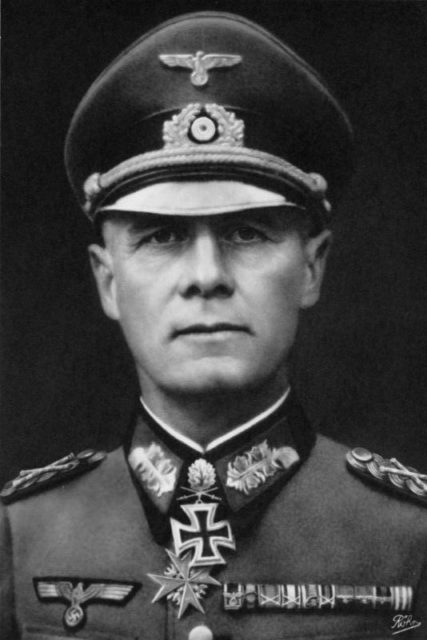
Field Marshal Erwin Rommel, commanding the defense, was a great believer in bold action. He tried to throw together a decisive counter-attack but never managed. Fuel shortages, tactical challenges, and enemy action always thwarted him.
Rommel was still one of Germany’s best commanders, and he put up a fierce fight. When he was injured in an Allied air attack on the 17th of July and so put out of action, it was a serious blow to his troops.
Mounting Losses
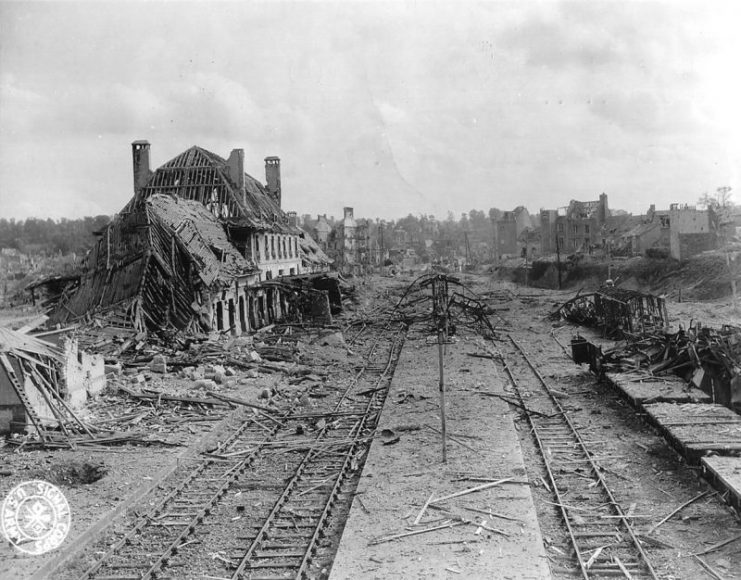
However hard they fought, the Germans were at a constant disadvantage. The Allies had more men, more resources, and less trouble getting them to where they were needed.
Critically, the Allies ruled the skies, allowing them to launch regular air strikes against German positions which the Germans could not counter. Combined with substantial forces of artillery, this could leave German defenses seriously compromised before an attack even began.
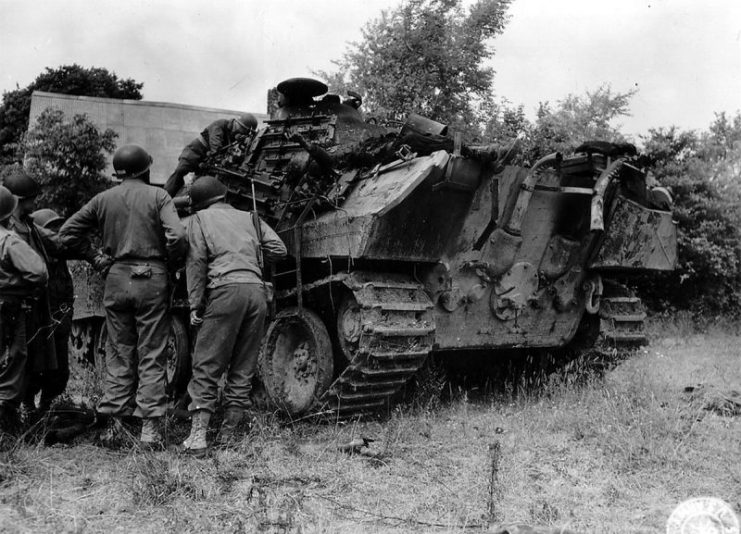
Though they were inflicting serious losses on the attackers, the Germans were suffering their own losses, which they were less able to replace. Every time they fell back from a position they did so with fewer men and less equipment than they had before. Supply shortages and transport problems meant that replacements were slow in coming.
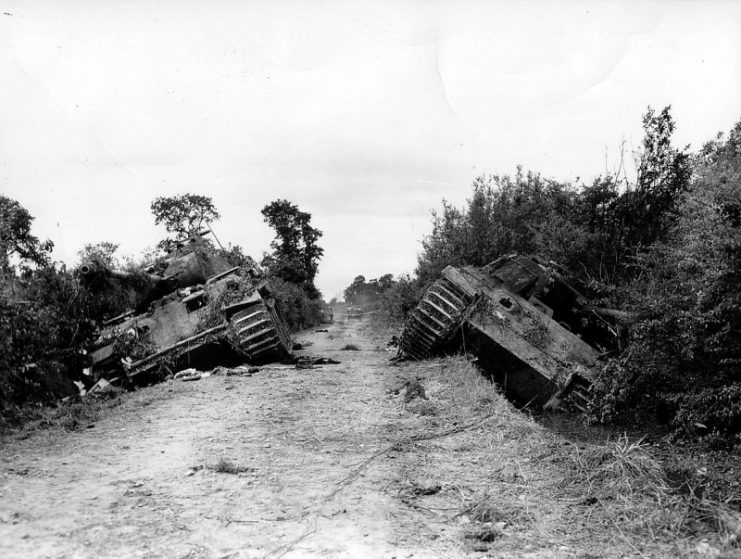
The loss of key commanders was particularly draining. General Marcks of the LXXXIV Corps was killed in a strafing attack on the 12th of June. The commander of the 12th SS Panzer division died on the same day. Five days later, they lost the commander of the 243rd Infantry. The head of the 77th was lost a day after that.
In just over a month, the Germans lost 2,360 officers, 94,000 men, and 225 tanks. Only 6,000 men and 17 tanks arrived as replacements.
The End
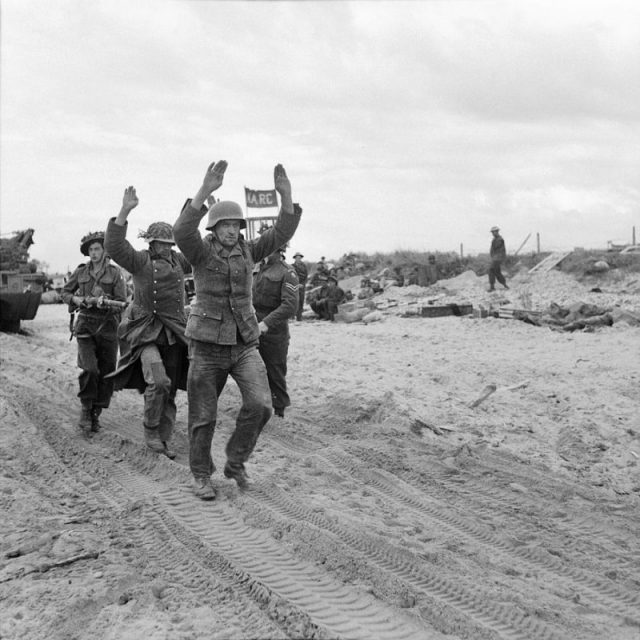
Four days before he himself was injured, Rommel predicted that the front would collapse within a month. He was right.
In late July, the Americans launched Operation Cobra, a breakout on the western flank. Hit hard by Allied air power and armor, the Germans there were unable to hold. Commanded by General Patton, American forces swept south and then east, flanking the remaining Germans.
By the middle of August, tens of thousands of German soldiers were trapped in a pocket of ground outside Falaise, about to be surrounded. They kept fighting fiercely, but the end was clearly in sight. Some fled through a gap to the east before it was closed. Thousands more fell captive when the gap was closed and the defenders were forced to surrender.
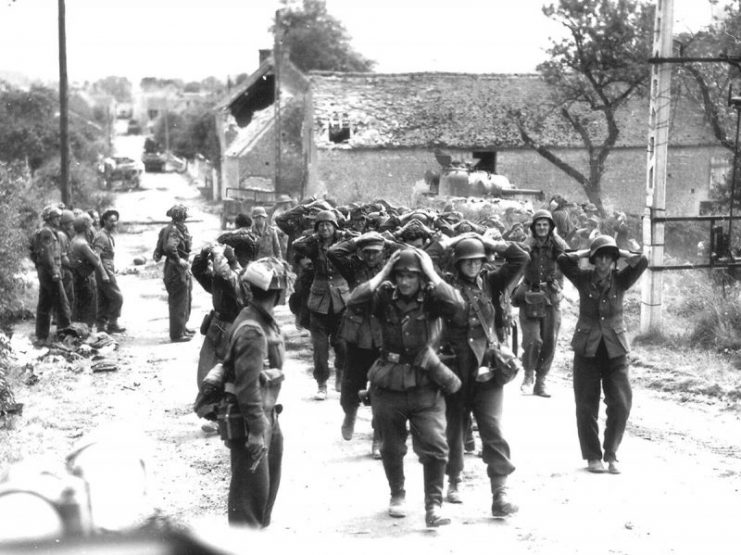
Fighting Well for a Terrible Cause
In Normandy, German troops fought to keep a country they ruled against its will, to prop up a murderous regime. No moral argument could justify their presence there. But they fought with skill, courage, and tenacity. It was a struggle against the odds that revealed the character of the German soldier.
